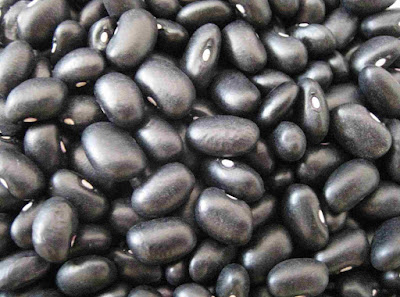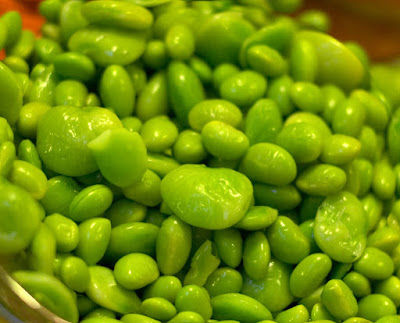It is nutritious, fast and easy to prepare. This is Tom Brady’s favorite food to eat for breakfast. Top the yummy frittata with soft artichokes.
 |
| Photo Credit: Jeffrey Beall |
According to their amazing personal chef, Tom Brady doesn’t eat mushrooms and some nightshades. But Tom, Gisele and their kids likes vegetables. Eighty percent (80 %) of what they eat is vegetables.
DID YOU KNOW?
1) Boiling broccoli decreases the levels of sulforaphane, with losses of 20–30% after five minutes, 40–50% after ten minutes, and 77% after thirty minutes.
However, other preparation methods such as steaming, microwaving, and stir frying had no significant effect on the compounds.
2) Click this link… Broccoli Benefits: Super Food Broccoli (Brassica oleracea Italica)
3) Broccoli was first introduced to the United States by Southern Italian immigrants, but did not become widely popular as food until the 1920s.
4) The total antioxidant capacity of artichoke flower heads is one of the highest reported for vegetables.
5) The Dutch brought artichokes to England, where they grew in Henry VIII's garden at Newhall in 1530. They were taken to the United States in the 19th century—to Louisiana by French immigrants and to California by Spanish immigrants.
6) Artichoke is #5 in fiber content among vegetables, fruits and legumes. Read other posts that explain why fiber is good for you and your loved ones. (1) How to Start a High Fiber Diet? - FAST, EASY and EFFECTIVE (2) How Does Eating Fiber Help You Lose Weight?
INGREDIENTS:
1 medium potato
1 whole egg
1 egg white
1/2 tbsp. water
1 to 2 tbsp. coconut oil
1/2 to 1 tbsp. garlic
1/4 cup broccoli (small florets)
1/4 cup brown or red rice (soaked or cooked)
Handful of collard greens (chopped)
1 tbsp. basil (picked)
Salt and pepper to taste
COOKING DIRECTIONS:
1) Preheat oven to 375ºF. Scrub potato under cold water, dry, and bake for 25–35 minutes. Remove potato from oven, let cool, and then dice small.
2) In a small bowl, whisk egg and egg white with 1/2 tbsp. of water.
3) In a nonstick pan, sauté 1/4 cup potato in coconut oil (coconut oil do not turn into trans fat when cooking) over medium heat until crispy. Add garlic and broccoli and cook for 1–2 minutes. Add rice and collards and cover for 10 seconds, or until collards are wilted.
4) Pour egg mixture evenly over vegetables in the pan, and then sprinkle basil on top. Season with salt and pepper.
5) With a rubber spatula, lift the edges of the frittata as it cooks, allowing the runny egg mixture to seep below until it becomes firm enough to flip (about 2–3 minutes). Using the spatula, flip the frittata over and finish cooking for 1 additional minute. Move frittata to a cutting board and slice into wedges.
Quick Broccoli Cooking Tips:
1) To purge insects from broccoli, mix two tablespoons white vinegar and one quart of cold water, soak the broccoli in the solution for fifteen minutes, and rinse clean.
2) Another way to purge insects from broccoli: Dissolve two tablespoons salt in one quart of cold water, soak the broccoli in the solution for fifteen minutes, and rinse clean.
3) Cooking a stalk of celery with broccoli prevents the broccoli from emitting a strong odor.
3) To revitalize wilted broccoli, cut an inch off the bottom of the stalk, mix one teaspoon lemon juice and two quarts of cool water, and soak the broccoli in the solution for thirty minutes to an hour.
Related Post: How to Keep Cooked Broccoli Bright Green?
INGREDIENTS:
3/4 cup small baby artichokes
Juice of 1/2 lemon
1 tsp. garlic (minced)
1 tsp. extra-virgin olive oil
Salt and pepper to taste
COOKING DIRECTIONS:
1) Poach artichokes for 16–20 minutes, until tender. Note: If using fresh artichokes, use enough water to cover the artichokes and half a lemon.
2) Cut artichokes into quarters.
3) Toss artichokes with lemon juice, garlic, and extra-virgin olive oil. Season with salt and pepper.
Quick Artichoke Cooking Tips:
1) To prevent fresh artichokes from browning, place artichoke quarters in cold water with lemon after removing outer leaves and inner fibers.
2) Cooking artichokes in broth or stock (any flavor) makes artichokes far tastier than cooking them in water.
3) To prevent artichoke hearts and bottoms from discoloring, bring one quart of water to a boil, beat in one-quarter cup flour and two tablespoons lemon juice, and blanch the artichoke in the solution by immersing and removing it quickly.
4) To prevent artichokes from becoming discolored when cooking and simultaneously make the flesh more succulent, mix one tablespoon Heinz white vinegar for every quart of cold water in a pot, and soak the artichokes in the solution for one hour prior to cooking.
5) To remove any insects harbored amidst the artichoke leaves, dissolve one-quarter cup salt in one quart of water and soak the artichokes in the salty water for thirty minutes. Rinse clean in clear cold water.
6) To avoid pricking your fingers when clipping off the ends of artichoke leaves with a pair of scissors, wear a pair of rubber or plastic gloves.
7) For another way to prevent artichokes from discoloring when cooking, prior to cooking, dip the trimmed end of the artichoke in natural lemon juice.
8) To enhance the taste of an artichoke, add one teaspoon lemon juice for each artichoke when cooking in water or broth.
9) Never cook artichokes in an aluminum or iron pot. The artichokes turn the cookware gray.
10) You need not remove the choke of an artichoke before cooking. However, to do so, pry open the center leaves at the top and use a paring knife to cut out the fine prickly leaves and the choke. If you prefer to wait until after cooking to remove the choke, use a spoon to excise the fine prickly leaves in the center and scoop out the choke.
11) An artichoke is finished cooking when a slight pull removes the leaves easily.
Awesome people who viewed this broccoli recipe also viewed these other broccoli recipes:
1) Creamy Broccoli- Parmesan Soup - The Food Lab Recipes
2) Broccoli Frittata Recipe- Healthy Recipes
3) Broccoli White Cheddar Pie- Healthy Recipes
4) Broccoli Sesame-Style- Healthy Recipes
REFERENCES:
Brady, Tom. 2017. The TB12 Method: How to Achieve a Lifetime of Sustained Peak Performance. Simon & Schuster. ISBN-13: 978-1501180736
Bongoni, R; Verkerk, R; Steenbekkers, B; Dekker, M; Stieger, Markus. 2014. Evaluation of Different Cooking Conditions on Broccoli (Brassica oleracea var. italica) to Improve the Nutritional Value and Consumer Acceptance. Plant foods for human nutrition. 69 (3): 228–234. PMID 24853375. https://www.ncbi.nlm.nih.gov/pubmed/24853375
Denker, Joel. 2003. The world on a plate. University of Nebraska Press. page #8. ISBN 978-0-8032-6014-6. Retrieved 24 April 2012.
Science Daily. 5 April 2005. Maximizing The Anti-Cancer Power of Broccoli. https://www.sciencedaily.com/releases/2005/03/050326114810.htm
Warwick Medical School, University of Warwick. 15 May 2007. Research Says Boiling Broccoli Ruins Its Anti Cancer Properties. http://www2.warwick.ac.uk/newsandevents/pressreleases/research_says_boiling/





































